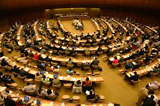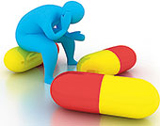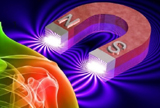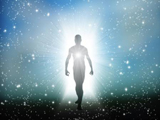Integral health
Integral Health: concepts and clinical practice
Abstract
This article explains various dimensions of health and addresses the scope and limitation of different methods of healing. The rationality behind the co-existence of various healing methods has been theoretically illustrated. The meaning of the spiritual dimension of health is touched upon. This article briefly explains the basic concepts of Integral Health as understood by the author and gives some suggestions for following these principles in one’s clinical practice.
Dimensions of health
The World Health Organization (WHO) has defined health as “a positive state of physical, mental and social well-being and not merely an absence of disease or infirmity (1).”
The physical and mental dimensions of health included in this definition imply soundness of body and mind as a basic necessity for attaining and maintaining health. The inclusion of a social dimension of health implies that the human being is a social entity too. A healthy society is simultaneously a cause as well as effect of the health of an individual. This reflects the fact that the scope of medical science exceeds previous boundaries, in incorporating social and environmental dimensions, without which any attainment health would remain incomplete.
Yet this view of health is not sufficient. Fundamentally, man is a living being and his life has both qualitative and quantitative dimensions. So far, modern medical science has largely been preoccupied with quantity. The qualitative aspect generally assumes a subordinate place. However medical science has recently started to recognize that the qualitative side of man can influence the quantitative. That is to say, when we suffer from a physical illness or discomfort, the body becomes the focus of our investigation and attention. We almost wholly ignore the psychological, social and spiritual issues that arise and perhaps even overlook a preceding cause for the physical disorder. Once the illness is cured, the qualitative aspects are again taken for granted and so neglected. As a matter of fact, if only the quantitative aspects (i.e. the statistical) of the physical, mental and social well-being are taken as complete markers of health, it would leave something missing or unaddressed in man and deny him a state of positive health.
Acknowledging the qualitative aspect as a fundamental component of one’s health, the World Health Assembly (WHA) incorporated a spiritual dimension in its definition of health in 1984. In doing so, the WHA observed that this dimension was also non-material in nature and belonged to the realm of ideas, beliefs, values and ethics that have arisen in the mind and conscience of human beings, particularly ennobling ideas. It also recognized that the spiritual dimension played a part in motivating people’s achievements in all aspects of life. It further noted that the material component of health strategy could be provided, while the non-material component had to arise within people and communities (2).
Although the spiritual dimension is difficult to define, it is not difficult to understand or live. This dimension is felt, and when so lived, pervades and transcends all dimensions of health, culture, society and religion.
The inclusion of a spiritual dimension in the definition is indeed a turningpoint in the history of modern medical practice, and may become the first step in the revolution of modern medicine.
Scope and limitation of various health practices
Different modes of healing have developed in different places at different times in the course of human civilization and therefore have been influenced by the prevailing knowledge, belief, skills and amenities. The raison d’être or motive behind the development of each one has however always been the same, i.e. elimination of illness and attainment and maintenance of positive health. Given the mammoth dimensions and complexities of human disease and health states, each method of healing has only partly succeeded in achieving this goal. None has completely and exclusively solved the mystery of health and disease. Each has its own bright success stories, but none and not even all together has won a complete victory over all illnesses.
Each method has developed its own particular understanding of the disease process. In other words, each method has glimpsed a partial understanding of the Truth which it then blindly follows! If one confines oneself to one’s own understanding, however advanced it may be, it is difficult to see the whole truth. Moreover it cannot be even acknowledged that other methods have their own truth and that each is the natural expression of health and healing.
Also the relationship of a partial truth to the whole and the whole to each of its constituent parts is an enigma which the modern mind does not easily comprehend. To an intellectual mind, trained in modern medicine, the ‘how’ behind this process can be explained by the theory of light.
There are two theories about light: one states that light is made up of particles, the other maintains and proves that it is comprised of waves. The first asssumes that these particles of light (corpuscles) have mass, velocity, direction and momentum. The wave theory considers light to have a wave nature containing properties of refraction, reflection and radiation. It states that light is energy in continuous wave-form and its presence can be detected by photographic plates. In reality, light is both particle and wave depending on the conditions. (3, 4, 5).
The working of allopathic science corresponds to the particulate nature of light. It views matter as the basis for all physiological, pathological, diagnostic and pharmacological processes. Disease and health have a definite material base and explanation. The working of health sciences such as homoeopathy, reiki, prāṇic healing, magnet therapy etc. correspond to the wave nature of light. The physiological, pathological, diagnostic and therapeutic processes of these sciences have a non-particulate or non-physical basis.
Table 1 briefly demonstrates a comparison of fundamental characteristics of various methods of healing. The salient features are:
(a) The basic processes of understanding disease and bringing about a cure are different.
(b) What one method understands as a cause of a disease, another interprets as the effect. Hence, the methodology for each is entirely different. The parameters for evaluating their effectiveness also differ.
(c) Illness and health have such a wide scope that each method corresponds to some of the fundamentals.
(d) In fact, from the prodromal phase of illness to its most advanced stage, there is a place for the diagnostic and therapeutic action of each healing method.
At present, modern medicine has gained much acceptance and popularity due to its rationality and efficacy in treating physical ailments. However, more subtle approaches have also started emerging into the global limelight due to dissatisfaction with side-effects of allopathic drugs and emphasis on physical factors alone.
Allopathy |
Reiki, Prāṇic healing, Magnet therapy |
|
1 |
Working: Corresponds to particulate form of energy | Working: Corresponds to non-particulate (Wave) form of energy |
2 |
Fundamental action : on physical plane | Fundamental action : on non-physical or vital planes |
3 |
Pathophysiological and diagnostic processes: (i) Detects abnormalities in physical matter (e.g. genetic, receptor and cellular level) (ii) Assumes this abnormality to be the cause of illness |
Pathophysiological and diagnostic processes: (i) Detects abnormalities in energy forms of an individual (ii) Assumes these abnormalities to be the predecessor of changes on the physical plane. |
4 |
Therapeutics: Aimed at reversal of material abnormalities and therefore the intervention is direct and quick. | Therapeutics: Aimed at correction of energy balance / non-physical plane disorders which can / may take care of physical ailments as its logical consequence in due time. Therefore the intervention is indirect and may be slower on gross physical plane. |
5 |
Objectivity: This science is quite objective, reproducible, quantifiable and independent of the ‘operator’ of the therapeutics. | Objectivity: Essentially, a qualitative science and its measures are different. The efficacy depends much more upon the human qualities of the giver and recipient of the therapy. Hence, it is not objective or indifferently reproducible in the same sense as allopathy. This however may be a presumption and more research may prove otherwise. |
6 |
Advantages: Its action on physical plane is unparalleled. And its place in operative and critically ill patients is undeniable. | Advantages: It acts on the subtle plane before the disease process can set roots on the physical plane and hence prevention is possible. |
7 |
Limitations: Overlooks the fact that man is not merely a machine and that his mental, emotional and spiritual constituents affect the causation and the remedy of many diseases. This science has too material an understanding of the processes of these constituents. | Limitations : (i) There can be lack of uniformity and reproducibility. (ii) In life-threatening and surgical conditions, the role of such therapy is inadequate, largely supportive and may sometimes be secondary at the most. |
Note: The working principles of homoeopathy can be broadly compared to those of reiki, prDKic healing, magnet therapy etc. with certain important differences in diagnostic and therapeutic details.
Table 1: Comparison of fundamental characteristics of various healing methods
However, a summation of the methods is not an answer to the complexity of this problem, as this way has obvious practical and fundamental limitations. For the medical practitioner, this limitation takes the form of his inability to acquaint himself with all the sciences. For a patient, the limitation can be more fundamental, because summation is not equivalent to totality and does not really address his own core problem.
Thus summation of the various methods may be desirable but is not the final answer. The final answer to health and disease can come when they are understood and approached integrally by a common underlying factor which explains not only the ‘how’ of the process but also the ‘why’.
Spiritual dimension of life
As briefly mentioned earlier, the spiritual dimension of health embraces a non-material dimension. It is an inner, experiential phenomenon. It reflects the knowledge that there is in man a plane of consciousness above suffering, pain and misery. This plane is the soul or psychic consciousness. The psychic consciousness is the spark of God in each human being. In the business of daily life, the whisper of the soul is usually buried and requires sustained effort and orientation to be heard. The results, when it is brought into awareness, are as follows:
(a) A changed perception and attitude towards life and its happenings.
(b) A protection against any vicissitudes in life as one’s outlook changes.
(c) An emergence of love, joy, oneness, nobility, wideness, calm and selflessness.
In proportion to the development of the psychic consciousness, the spiritual dimension of health influences other dimensions of one’s being.
Thus, for each individual, the spiritual dimension of health refers to a state of inner development that enables one to positively view and influence life at all times, i.e. in health as well as disease.
Briefly, the spiritual dimension of health gives an insight: an integral view of health that can find in its details, application on all levels.
Integral health in clinical practice
An integral view of health is based on an integral view of life. Such a view is only truly possible when we see things from above downwards rather than from below upwards. That is to say, we need to view the afflictions of the physical, mental and even social domains by rising above them. It is not possible to have an integral view in full clarity and totality while we still wander below in the obscure passages of the mental world. So what is this vision? According to the spiritual masters, there is a hidden divinity within man and in all parts of his being. The very purpose of human existence is to progressively unfold this divinity in all planes and actions. The physical plane is the plane for manifestation of perfect beauty, the mental plane for manifestation of perfect knowledge, the vital plane for the manifestation of perfect dynamism, the psychic plane for the manifestation of the Absolute. Wherever there is resistance or unwillingness in man to raise himself up to the light of the soul consciousness, it can result in disequilibrium and manifest as ‘disease’. Although there can be external causes, the real or fundamental cause is always a breach in one’s inner equilibrium, which makes one susceptible to the effect of external causes.
Thus an integral view of health regards disease not as the cause of illness but rather as an effect of a subtle disequilibrium. Therefore, the approach to cure is not only the removal of the manifestation of disease, but also a correction of thisequilibrium on a more fundamental level. This can be attained in many ways, the essential one being the progressive growth of consciousness and harmonisation around the soul. External therapeutic measures are important tools for correcting the disorder, but their effect is enhanced if they are viewed as aids or adjuncts in helping the body to consciously regain this inner equilibrium. This can bring about a lasting cure and become a step forward in the growth of the individual consciousness (10). This changes the perspective of health, disease, therapeutic and preventive measures by reorientating them in the light of the soul consciousness. There being no denial of any therapy, the attitude to the application of these methods is changed.
Finally we come to the most fundamental and practical question: how can a therapist (of any field) practice the principles of Integral health in his daily work? The following are some suggestions based on the author’s limited understanding, during his many years of practice in medicine, while trying to relate it with the deeper view and vision of health that only spirituality can provide. Of course, there may be other views and ways since the very concept of Integral Health is an evolving one. As humanity evolves in its inner and outer knowledge, so too our understanding will come closer to the Truth and will change. Nevertheless, it may be useful to share our experiences with other colleagues and leave it up to them to decide if they find them useful. Some observations/ suggestions that I have found useful in my personal practice are as follows:
(a) One needs to understand the subtle truth that elimination of disease is essentially a removal of falsehood in oneself as in all, possible only through the action of Divine Grace, as it alone has the ultimate transforming and conquering power.
(b) One needs to enlarge and accommodate other sciences of health as having their own well-defined and genuine place in therapeutics. It is in the patient’s interest that the physician acts and not merely to support a mental theory as infallible dogma.
(c) One does well to widen the base of knowledge and learn the fundamentals of other healing methods too. The physician may or may not be able to apply them, but the exercise will increase the comprehension and lead one to think about their appropriate utility in clinical practice.
(d) In ancient times, physicians were also priests or rather priests were physicians. Perhaps there was a subtle truth in this, a gentle reminder that to be a complete physician one needs to be enlightened as well!
(e) In no other profession does a fellow human being ever open his heart so completely. So if one can open one’s own eyes to see the Divine in one’s patients, the Divine will surely look out through the patients’ eyes.
(f) It does well to remember the age-old maxim, “I Treat, He Cures”.
References
1. W.H.O. Health for All,1978 Sr. No. 1.
2. WHA. 37th World Health Assembly. Geneva; Hbk.Res. Vol. 11 ( 5th Ed.) 1.1. 37.13.
3. Einstein. A., in Shankland R.S. (Ed.). The Compton Experiment, Appendix 3, Scientific Papers of Arthur Holly Compton, X-Ray and other studies. Chicago; University of Chicago Press, 1975.
4. Ghatak A. K., Loknathan S. Quantum Mechanics, theory and applications. India; Macmillan India Limited, 1992, pp. xvi, 27-28.
5. Wave particle duality theory http\\www.thespectroscopynet.com/educational/wave-particle-duality theory.
6. Pandey Alok. Measures in medicine. NAMAH 1996; 3:2, 5.
7. Mari Hall. Practical Reiki. India; Harper Collins Publishers, 2000,
pp. 6-7.
8. Choa Kok Sui. Miracles through Pranic Healing. Manila; Sterling Publishers Pvt. Ltd., 1999, pp.15-18.
9. Ruth White. Chakras — a New Approach to Healing your Life. Bombay; India Book Distributors Ltd., 2000, pp. 3-17.
10. Soumitra Basu. A programme for Integral Health. NAMAH 2002; 10:1, 26.
Dr. Bhalendu S.Vaishnav is Asst. Professor in the Dept. of Medicine at the Pramukh Swami Medical College, Gujarat, India.
Share with us (Comments,contributions,opinions)
When reproducing this feature, please credit NAMAH,and give the byline. Please send us cuttings.








